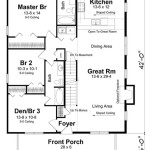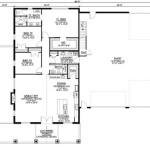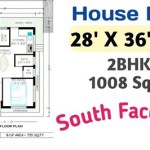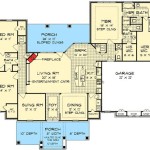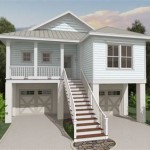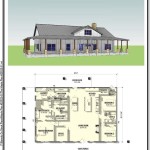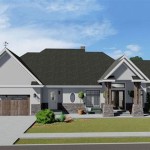Navigating Home Plans with Cost-to-Build Estimates: A Comprehensive Guide
Building a new home represents a significant investment, both financially and emotionally. A crucial step in this journey involves selecting the right home plans. However, simply choosing a design is insufficient. Understanding the associated cost to build is paramount to making informed decisions and avoiding unforeseen financial burdens. This article explores the landscape of home plans with cost-to-build estimates, providing a detailed overview of factors influencing these estimates, how to interpret them, and strategies for managing construction costs effectively.
Home plans with cost-to-build estimates offer a preliminary projection of the expenses associated with constructing a specific house design. These estimates typically encompass a range of factors, from materials and labor to permits and site preparation. While not a guaranteed final figure, a reliable cost-to-build estimate serves as a valuable tool for prospective homeowners to gauge affordability, compare different designs, and secure financing.
The complexity of accurately estimating construction costs necessitates a thorough understanding of the variables at play. Several elements contribute to the final price tag, and variations in these elements can significantly impact the overall cost. A prudent approach involves careful consideration of each factor and diligent research to ensure a realistic budget is established.
Key Factors Influencing Cost-to-Build Estimates
The accuracy of a cost-to-build estimate hinges on the comprehensiveness of the data informing it. Several major factors contribute to the final cost, and understanding these is crucial for interpreting estimates effectively.
Location: Geographic location is perhaps the most significant determinant of construction costs. Labor rates, material prices, and permit fees vary considerably from one region to another. For instance, constructing a home in a metropolitan area with high demand and limited land availability will inevitably be more expensive than building in a rural area with lower labor costs.
Size and Complexity of the Design: The square footage of the home directly correlates with the amount of materials and labor required. More complex designs, such as those with intricate rooflines, custom features, or unusual layouts, will also increase costs. Two-story homes often require less land and foundation work than single-story homes of the same square footage, but this can depend on the design complexity.
Materials Used: The choice of building materials has a substantial impact on the overall cost. Opting for high-end finishes, such as hardwood flooring, granite countertops, or custom cabinetry, will significantly increase expenses compared to using standard or builder-grade materials. Similarly, the choice of framing material (e.g., wood versus steel) and exterior cladding (e.g., brick, siding, stucco) will affect the budget.
Labor Costs: Labor represents a significant portion of the total construction cost. Labor rates vary depending on the region, the specific trade (e.g., carpentry, plumbing, electrical), and the experience and skill of the contractors involved. Union versus non-union labor can also be a factor.
Site Preparation: The condition of the building site can significantly impact costs. Sites requiring extensive clearing, grading, excavation, or foundation work will add to the overall expense. Issues such as soil instability, drainage problems, or the presence of underground utilities can also increase site preparation costs.
Permits and Fees: Building permits and associated fees are required by local governments to ensure compliance with building codes and regulations. These fees can vary depending on the location, the size of the project, and the complexity of the design. Impact fees, which are charged to offset the cost of public infrastructure improvements necessitated by new development, may also apply.
Finishes and Fixtures: The selection of finishes and fixtures, including flooring, countertops, cabinetry, appliances, lighting, and plumbing fixtures, constitutes a significant portion of the interior design budget. The quality and style of these items can dramatically impact the overall cost.
Interpreting Cost-to-Build Estimates: A Critical Approach
Cost-to-build estimates are not guarantees but rather projections based on available data and assumptions. It is crucial to approach these estimates with a critical eye and understand their limitations.
Understanding the Scope of the Estimate: Determine what the estimate includes and excludes. Does it cover all aspects of the construction process, or are certain items, such as landscaping, driveways, or appliances, excluded? Ensure clarity regarding the inclusions to avoid unexpected expenses later on.
Identifying the Source of the Estimate: Understand who generated the estimate and their qualifications. Estimates from reputable builders or architects are generally more reliable than those from less experienced sources. Inquire about the data used to create the estimate and the methodology employed.
Verifying the Assumptions: Examine the assumptions underlying the estimate. What material prices were used? What labor rates were assumed? What allowances were made for contingencies or unforeseen problems? Verify that these assumptions are reasonable and applicable to the specific project and location.
Seeking Multiple Estimates: Obtain estimates from multiple builders or contractors to compare prices and identify potential discrepancies. This process provides a broader perspective on the cost range and helps identify potential outliers or inconsistencies.
Considering Contingency Funds: Building projects invariably encounter unforeseen issues or changes that can impact costs. It is prudent to include a contingency fund in the budget to cover these unexpected expenses. A typical contingency fund is around 5-10% of the total estimated cost.
Strategies for Managing Construction Costs Effectively
While cost-to-build estimates provide a valuable starting point, proactive cost management strategies are essential to keep the project within budget. Several techniques can be employed to control expenses throughout the construction process.
Value Engineering: Value engineering involves analyzing the design and specifications to identify opportunities for cost reduction without compromising functionality or quality. This may involve substituting materials, simplifying design elements, or optimizing construction methods.
Careful Material Selection: Choosing cost-effective materials without sacrificing durability or aesthetics can significantly reduce expenses. Consider exploring alternatives to high-end finishes or opting for readily available materials that are less expensive than custom or specialty items.
Competitive Bidding: Obtain bids from multiple subcontractors for each trade to ensure competitive pricing. Thoroughly evaluate the bids, considering not only price but also the subcontractor's experience, reputation, and insurance coverage.
Clear Communication: Maintaining clear and open communication with the builder or contractor is crucial for preventing misunderstandings and avoiding costly changes. Regularly discuss the budget, track expenses, and promptly address any concerns that arise.
Phased Construction: Consider phasing the construction project to spread out the expenses over time. This may involve completing essential elements first and postponing non-essential features until later. For instance, landscaping or certain interior finishes could be deferred until the initial construction is completed.
Owner Involvement: Depending on skills and time availability, homeowners can contribute to the project by performing certain tasks themselves. This may include painting, landscaping, or installing certain fixtures. However, it is important to only undertake tasks that are within one's capabilities and that do not require specialized skills or licenses.
Detailed Contract Negotiation: A comprehensive and well-defined construction contract is essential to protect the homeowner's interests and minimize the risk of disputes. The contract should clearly outline the scope of work, payment schedule, change order procedures, and dispute resolution mechanisms.
By carefully considering these factors and implementing effective cost management strategies, prospective homeowners can navigate the complexities of building a new home with greater confidence and financial stability. Diligence in planning and execution remains the best approach when realizing the dream of home ownership.

Estimated Cost To Build Report Information House Plans And More

Get The Lowdown On Cost To Build Estimates Houseplans Blog Com

Get The Lowdown On Cost To Build Estimates Houseplans Blog Com

Get The Lowdown On Cost To Build Estimates Houseplans Blog Com

16 Cutest Tiny Home Plans With Cost To Build Craft Mart

Home Building Cost Spreadsheet New Homes

16 Cutest Tiny Home Plans With Cost To Build Craft Mart

Est House Plans To Build Simple With Style Blog Eplans Com

Est House Plans To Build Simple With Style Blog Eplans Com

Building By The Book Someday My Blue Prints Will Come Hometown Handlebar

